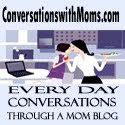
A Way Through founders, Jane Balvanz and Blair Wagner are dedicated to helping parents understand today’s girls and the peer pressure, friendships, relationships and so much more they face today.
Bullying has become a hot topic that needs to be addressed and needs to stop. Blair Wagner writes an interesting and educational article about bullying and the myths many believe.
Are You Believing the WRONG THINGS About Female Bullying?
It’s a common thought in parenting circles to think that girls shouldn’t treat each other this way. Says whom?
Try this on… Girls should all get along perfectly, have exquisite emotional and social skills, and treat everyone with the utmost respect. Can you hear violins playing sweetly in the background?
Yeah? Well, here’s the deal. It doesn’t work that way. And, it’s not supposed to work that way. Girls (like everyone else) are on this earth to maneuver through the contrast of our world (which is often sticky, and sometimes painful) to find what feeds their passion and to create joy in their lives. In order to do that and to become clear about what they DO WANT, girls need to experience what they DON’T WANT.
When we help girls recognize that some friends will feel good to be with and others won’t, girls can begin to make choices based on their inner guidance system (emotions). For myself, I’ve found the key to be a healthy combination of two things:
Lack of resistance (let others’ ugly behaviors roll off like water on a duck)
Conscious focus on what I want in my relationships
When I’m in that nonresistant, positive-focus zone, I find that beautiful people and experiences show up around every corner. Our work as girl guides is to help girls get into that zone.
Wrong Thing #2: Relational Aggression is Getting Worse and the World Is a Mess
With a little effort, we can find evidence to support any viewpoint on any topic. There are certainly visible signs of problems in our world, and we see statistics on how emotional bullying is affecting girls in increasing numbers. This is real. And yet, we get more of what we pay attention to.
There is so much well-being in this world; it far outweighs the lack of well being. When we look at relational aggression as an overwhelming, unsolvable problem, we add to the problem. We can’t solve relational aggression (or any problem for that matter) from a place of fear and overwhelm. Faith, curiosity, and optimism go much further.
Wrong Thing #3: Emotional Bullying Starts in Middle School
Yes, we see a peak of emotional bullying in the middle school years. But, as any kindergarten (and even pre-school) teacher will tell you, it starts very, very young among girls. Relational Aggression from a five-year old (“I won’t be your friend if you…”) may not be as sophisticated as from a thirteen-year old (“let’s start an I-Hate-Miranda web site”), but the pattern can and does begin in the pre-school years.
Savvy parents start very young guiding their daughters to connect with their personal power and to find and cultivate friendships that feel good.
Wise educators see relational aggression as an issue that needs to be addressed as young as kindergarten. Schools that implement common language and strategies within their school community (and consistently teach these to the youngest of their students) will find they have less relational aggression among their female students as they head into their teens.
© 2009 A Way Through, LLC











